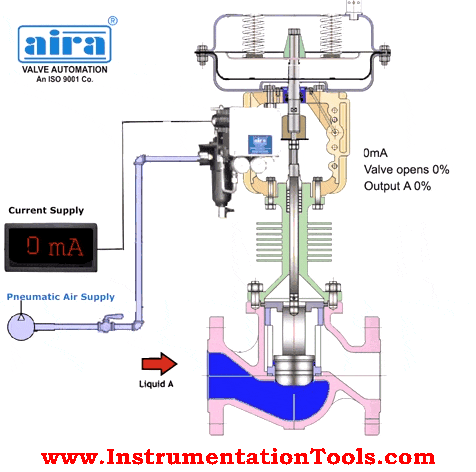Enhancing Operational Efficiency with Advanced Control Valves
Wiki Article

Maximize Power Financial Savings and Comfort With Advanced Building Automation Controls
In the realm of modern design and facility administration, the assimilation of sophisticated structure automation regulates stands as a critical improvement. By utilizing the power of automation, structures can adapt, respond, and progress in methods that were as soon as unbelievable.Power Efficiency Advantages
Energy effectiveness advantages can significantly lower energy intake and functional costs in buildings. By applying energy-efficient practices and modern technologies, structure proprietors and operators can achieve considerable savings while also adding to ecological sustainability. One of the primary advantages of boosting energy efficiency in buildings is the reduction of utility costs. Energy-efficient systems, such as sophisticated building automation controls, can optimize the usage of sources like home heating, lights, and air conditioning, resulting in lower energy expenditures over time.In addition, enhanced power effectiveness can lengthen the lifespan of building tools and systems. By running a lot more efficiently, HVAC systems, lighting components, and other building components experience less damage, causing minimized upkeep and replacement expenses. In addition, energy-efficient structures commonly command greater home values and rental rates, providing lasting financial advantages to proprietors.
Furthermore, power effectiveness can improve occupant convenience and efficiency. Appropriately controlled interior atmospheres with ideal lighting and thermal problems create a more helpful and positive workspace, causing enhanced worker fulfillment and efficiency. Overall, the power effectiveness benefits associated with innovative structure automation controls are complex, including price financial savings, ecological stewardship, and passenger health.
Improved Comfort Control
Enhancing convenience control in structure settings calls for a sophisticated assimilation of advanced automation systems for optimal passenger health. By utilizing sophisticated building automation controls, centers can tailor the indoor atmosphere to satisfy the particular demands and preferences of occupants. These systems allow specific regulation of ventilation, lighting, and temperature, creating a effective and comfortable environment. Passenger complete satisfaction and productivity are closely connected to thermal comfort, making it vital to have systems in place that can adjust to altering problems in real-time.Enhanced comfort control surpasses basic temperature changes. It includes attributes such as tailored settings, occupancy sensors, and all-natural light application to develop a receptive and vibrant atmosphere. By including these innovative controls, structures can not only improve comfort but also improve power effectiveness by enhancing system operations based on real tenancy and use patterns. Inevitably, prioritizing passenger convenience through sophisticated automation systems brings about an extra pleasurable and much healthier interior environment.
Functional Effectiveness Improvements

Additionally, the application of real-time surveillance and analytics devices makes it possible for building operators to identify energy inefficiencies and functional abnormalities without delay. By constantly checking power usage patterns and system performance metrics, modifications can be made in real-time to maximize energy intake and make sure peak functional performance. control valves. Additionally, integrating need feedback techniques right into building automation controls can additionally boost operational efficiency by dynamically changing energy usage based on grid conditions and prices signals
Indoor Environment Optimization
Efficient indoor climate optimization is an essential element of structure automation controls, making sure passengers' convenience and wellness while making best use of energy cost savings. By using innovative sensing units and controls, constructing automation systems can continuously Go Here monitor and readjust temperature level, humidity degrees, air quality, and ventilation to create an optimal interior environment. Maintaining constant and comfy conditions not only boosts passenger fulfillment but also enhances performance and overall well-being.Interior environment optimization additionally plays a critical function in energy effectiveness. By fine-tuning air flow, home heating, and cooling systems based on real-time information and tenancy patterns, constructing automation controls can substantially decrease power intake - control valves. For example, executing techniques such as demand-controlled ventilation and find out here now thermal zoning can aid decrease power waste while ensuring that each location of the building obtains the necessary conditioning.

Lasting Environment Creation
Structure automation controls not just maximize indoor environment problems for power efficiency and occupant convenience yet likewise lay the structure for producing a sustainable atmosphere with tactical monitoring of sources and systems. By integrating innovative structure automation technologies, such as sensors, actuators, and smart software, facilities can check and adjust power use in real-time to reduce waste and minimize their carbon footprint. These systems enable anticipating upkeep, recognizing potential concerns prior to they intensify and enhancing tools efficiency to enhance durability and performance.Additionally, lasting atmosphere production expands past power monitoring to include water conservation, waste reduction, and indoor air quality improvement. Building automation controls can manage water use, spot leaks, and guarantee appropriate waste disposal practices, adding to total sustainability initiatives. Additionally, by regulating and checking ventilation and filtration systems, these technologies boost owner wellness and productivity while decreasing power usage related to heating and cooling operations.
Final Thought
To conclude, progressed building automation regulates deal significant advantages in terms of energy cost savings, convenience control, functional performance, interior environment optimization, and developing a lasting setting. By implementing these controls, structures can achieve ideal efficiency while minimizing power usage and boosting owner convenience. It is noticeable that using sophisticated automation innovation is vital in boosting structure performance and producing a more sustainable future.Power effectiveness advantages can dramatically reduce power consumption and operational costs Get the facts in structures. In general, the power efficiency advantages linked with advanced building automation controls are diverse, incorporating expense financial savings, ecological stewardship, and resident wellness.
Additionally, including need feedback approaches into structure automation controls can further boost operational performance by dynamically changing energy use based on grid problems and prices signals.
Building automation regulates not just maximize interior climate problems for energy efficiency and owner convenience however additionally lay the structure for producing a sustainable atmosphere via critical monitoring of sources and systems.In verdict, progressed building automation manages offer significant advantages in terms of energy savings, convenience control, operational performance, interior environment optimization, and creating a lasting setting.
Report this wiki page